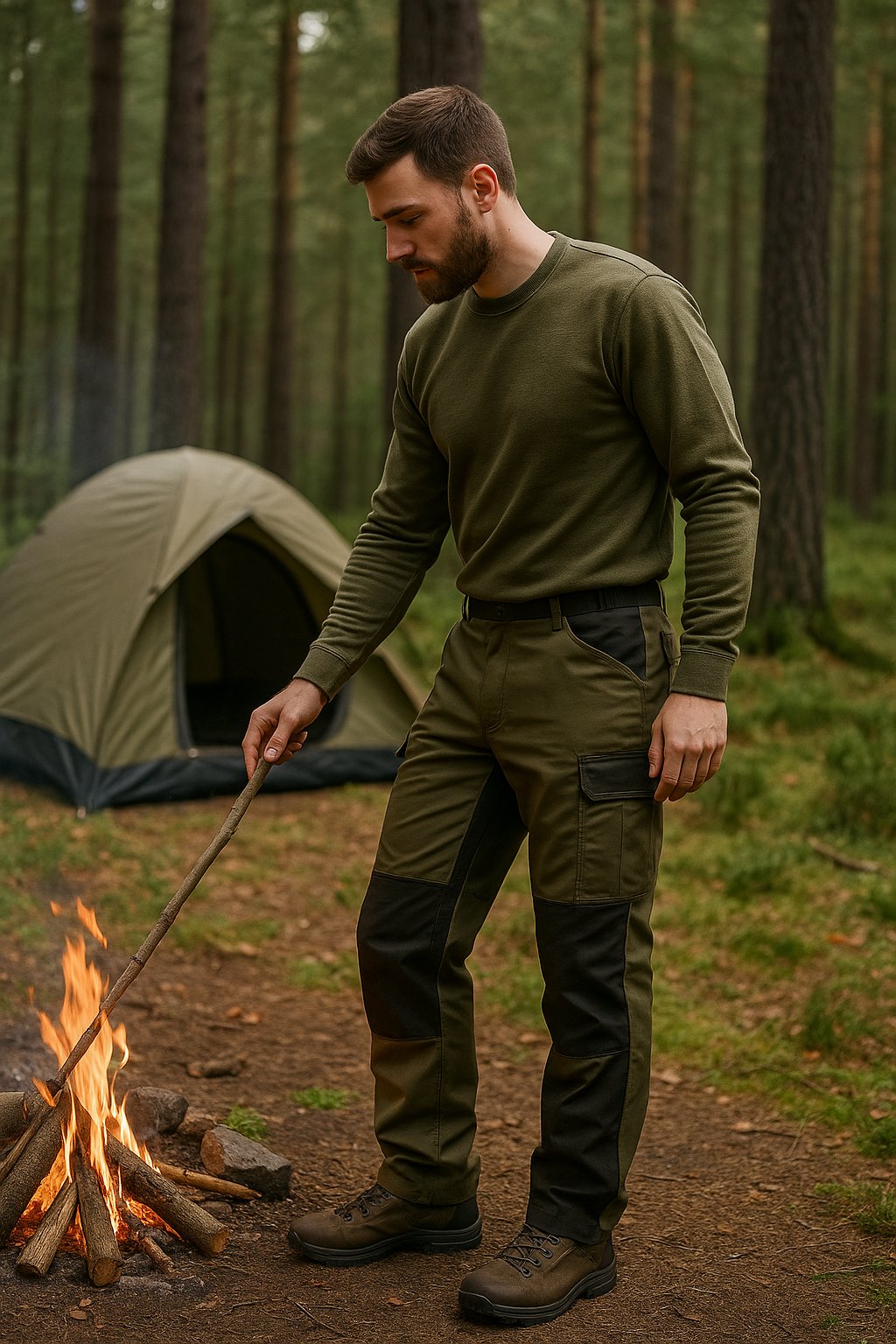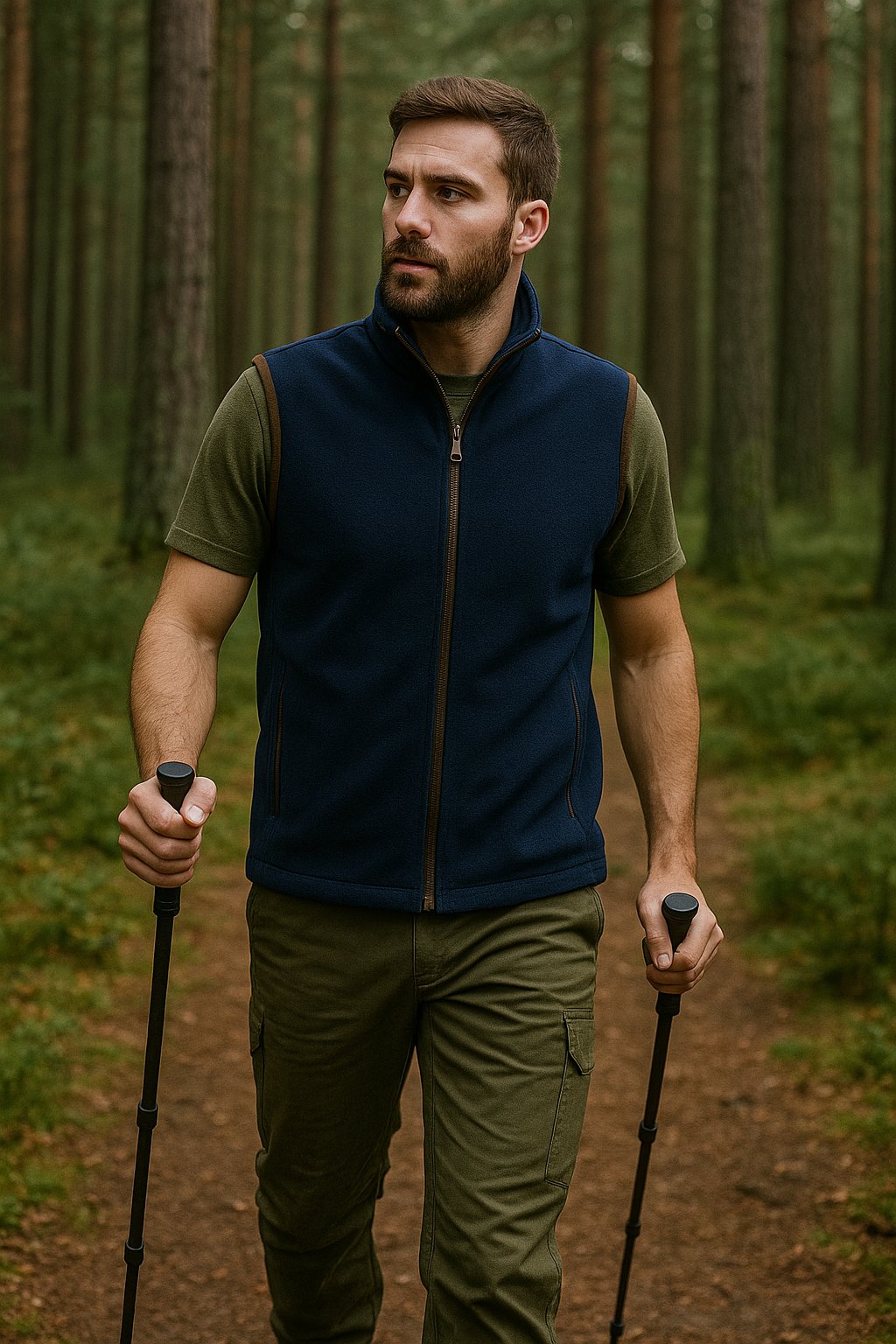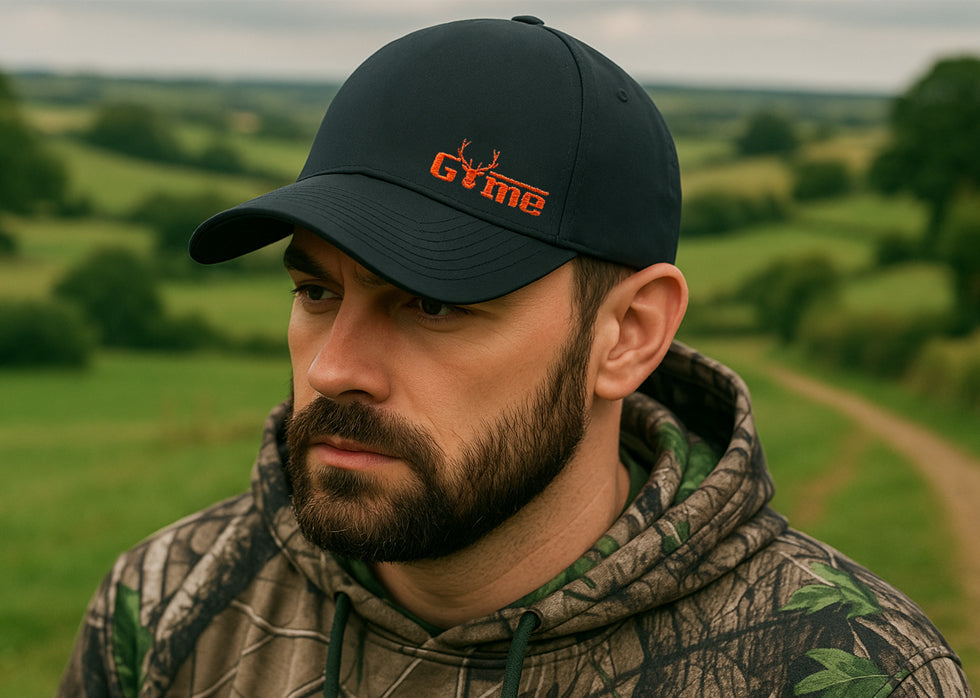Layering Guide: How to Wear Waterproof Trousers for Maximum Comfort
When it comes to outdoor adventures or braving the elements, waterproof trousers are an essential part of your gear. However, the secret to staying comfortable and dry isn’t just about donning a pair of waterproof trousers—it’s about layering them correctly. This comprehensive guide will walk you through everything you need to know about layering waterproof trousers for maximum comfort, ensuring you’re prepared for any weather conditions.
Why Layering Matters
Layering is not just a fashion statement but a critical strategy for managing body temperature and moisture. Proper layering allows you to adapt to changing weather conditions, regulate your body temperature, and stay comfortable no matter how long your outdoor adventure lasts.

Base Layer: The Foundation of Comfort
The base layer is the first and most important layer that sits directly against your skin. It’s responsible for wicking moisture away from your body, keeping you dry and warm.
-
Material Selection: The key to an effective base layer is choosing the right material. Merino wool and synthetic fabrics like polyester or nylon are excellent choices as they offer superior moisture-wicking properties. Merino wool is particularly popular because it is naturally odor-resistant and feels soft against the skin.
-
Fit: Your base layer should fit snugly but not too tight. A close fit ensures that moisture is effectively wicked away, while a loose fit can cause the fabric to bunch up under your waterproof trousers, leading to discomfort.
-
Temperature Consideration: For cold conditions, opt for a thicker base layer with insulation properties. In warmer climates, a lightweight base layer will suffice, as its main function is moisture management rather than warmth.

Mid-Layer: Insulation for Warmth
The mid-layer serves as the insulation layer, trapping body heat to keep you warm. This layer is especially important in cold or unpredictable weather conditions.
-
Material Options: Fleece, down, and synthetic insulations like Primaloft are popular choices for mid-layers. Fleece is a versatile option, providing warmth without too much bulk. Down offers superior warmth-to-weight ratio but may lose its insulating properties if it gets wet. For wet conditions, synthetic insulation like Primaloft is ideal as it retains warmth even when damp.
-
Layering Strategy: Depending on the temperature and your activity level, you might choose to wear a light or heavy mid-layer. For high-intensity activities, a thinner mid-layer will prevent overheating, while for more static activities in cold weather, a thicker mid-layer is advisable.
-
Layer Compatibility: Ensure your mid-layer fits comfortably under your waterproof trousers without restricting movement. It should also be easy to add or remove layers depending on the conditions.
Outer Layer: Waterproof Trousers
The outer layer is your shield against the elements, protecting you from wind, rain, and snow. Waterproof trousers are the final and most crucial layer in your layering system.
-
Material and Technology: Waterproof trousers are typically made from Gore-Tex or similar waterproof and breathable fabrics. These materials are designed to keep water out while allowing moisture from sweat to escape, preventing that clammy feeling. Look for trousers with fully taped seams to ensure no water can penetrate through the stitching.
-
Fit and Functionality: Waterproof trousers should fit comfortably over your base and mid-layers without being too tight. Adjustable waistbands and cuffs help to create a secure fit, while side zips can offer ventilation options and make it easier to put the trousers on over boots.
-
Features to Look For: Consider waterproof trousers with features like reinforced knees and seat areas for added durability, especially if you plan on engaging in rugged activities. Articulated knees and gusseted crotches enhance mobility, which is crucial for activities like hiking or climbing.

Additional Considerations for Layering Waterproof Trousers
Layering isn’t just about the clothes you wear—it’s also about how you wear them. Here are some additional tips to maximize comfort when layering waterproof trousers:
-
Ventilation: If you’re engaging in high-intensity activities, look for waterproof trousers with ventilation zips. These allow you to regulate your temperature by letting out excess heat without compromising waterproofing.
-
Layering Order: Always ensure your base layer is tucked into your socks or footwear to prevent it from riding up and causing discomfort. The mid-layer should fit neatly over the base layer, and the waterproof trousers should cover both completely.
-
Footwear Consideration: The type of footwear you wear will affect how you layer your waterproof trousers. If you’re wearing boots, ensure your trousers can easily fit over them to prevent water from seeping in.
-
Activity Type: The type of activity you’re engaging in will dictate the thickness and type of each layer. For instance, a lightweight base layer and a breathable waterproof outer layer are ideal for high-intensity activities like running or cycling in wet conditions. In contrast, a thicker base layer and an insulated mid-layer are better suited for cold-weather hiking or mountaineering.
-
Weather Conditions: Always consider the weather forecast before choosing your layers. In milder conditions, you might opt to skip the mid-layer altogether, but in colder climates, a well-insulated mid-layer is essential.
Common Mistakes to Avoid
Even with the right gear, mistakes in layering can lead to discomfort. Here are common pitfalls to avoid:
-
Over-Layering: Wearing too many layers can restrict movement and cause overheating. It’s better to have a few well-chosen layers that you can easily adjust rather than piling on unnecessary clothing.
-
Ignoring Breathability: Waterproof trousers that aren’t breathable can trap sweat, leading to dampness and discomfort. Always prioritize breathability, especially if you’ll be active.
-
Incorrect Layer Order: Wearing layers in the wrong order can reduce their effectiveness. Always start with a moisture-wicking base layer, followed by an insulating mid-layer, and finish with a waterproof outer layer.
-
Neglecting Fit: Ill-fitting layers can bunch up, restrict movement, and reduce the effectiveness of each layer. Ensure that each layer fits well and works harmoniously with the others.
Maintaining Your Layering System
Proper maintenance of your layering system ensures longevity and performance. Here’s how to care for your waterproof trousers and other layers:
-
Cleaning: Follow the manufacturer’s instructions for cleaning each layer. Waterproof trousers often require special detergents that don’t strip away the waterproofing.
-
Re-waterproofing: Over time, the waterproofing on your trousers may wear off. Use a waterproofing spray or wash-in treatment to restore the water resistance.
-
Storage: Store your layers in a cool, dry place away from direct sunlight. Avoid compressing insulated layers for long periods as this can reduce their loft and insulating properties.
-
Inspection: Regularly inspect your layers for signs of wear and tear, especially in high-stress areas like seams, zippers, and cuffs. Address any issues promptly to ensure your gear remains in top condition.
Layering waterproof trousers effectively is an art that combines the right materials, fit, and functionality. By following this guide, you can ensure maximum comfort, no matter what the weather throws at you. Remember, the key to staying dry and warm is not just in the quality of your waterproof trousers but in how you layer them.






Leave a comment